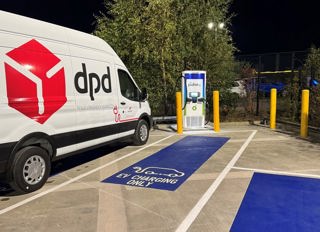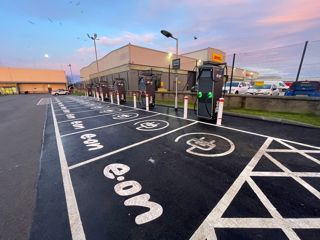By Maria Bengtsson, UK mobility leader at EY
The latest EY report with Eurelectric revealed the significant potential of vehicle-to-grid (V2G) technology, which allows electric vehicles (EVs) to send stored energy back to the grid - to save consumers substantial amounts of money as well as supporting grid capacity.
According to the report, owners of large EVs could save up to £1,475 annually by utilising optimised charging solutions including Time of Use (ToU) tariffs and V2G charging, which could simultaneously help to ensure electricity grids don’t become overwhelmed at peak times.
However, with V2G still in its infancy, its impact on consumers and businesses alike is yet to fully materialise.
That said, businesses with a key role to play in the V2G value chain, such as vehicle manufacturers, vehicle charging providers, fleet operators/managers, charger manufacturers and installers, aggregators and energy retailers, could benefit significantly by factoring V2G technology into their planning.
Understanding the entire value chain is critical
For businesses to capitalise upon the opportunities presented by V2G charging solutions, they first need to understand their role in the value chain, as well as the role of other key players and stakeholders.
Whether you’re a fleet operator, a vehicle manufacturer, or a utility company, it is pivotal to understand how you can interact with other key players in the value chain before V2G is fully commercially operational.
If companies wait until V2G is more developed before planning and gathering information, they risk losing a potentially significant competitive advantage.
Although the V2G landscape currently remains unclear, planning should start as soon as possible if it hasn’t already.
How vehicle manufacturers can prepare for V2G
A key consideration for vehicle manufacturers will be how they intend to manage the use of V2G technology by their customers.
For example, how stringently do they want to control the number of charging and discharging events per day? Policies around warranties may need to be updated to reflect this.
The residual values of Battery Electric Vehicles (BEVs) are also a key consideration.
There is currently a lack of data available around how V2G might affect the condition of the battery and the associated impact on the residual value of the vehicle, so how can consumers and businesses be reassured on this when purchasing BEVs and utilising V2G technology?
These are crucial questions. However, conversely, if manufacturers implement protocols to limit the number of discharging sessions – where energy is supplied by vehicle batteries back to the grid – this may not be well-received by other key stakeholders in the value chain, such as grid operators.
It is therefore vital that a careful balance is struck between flexibility at the right times and to the right extent to maximise benefits and ensure a mutually beneficial relationship across the V2G value chain.
Getting the right advice, and getting it early, is key
While V2G remains in its infancy and the landscape is still very much evolving, it is critical for businesses to access the right advice to ensure they understand what taxes and regulations they are exposing themselves to by taking on certain roles in the value chain.
Proactive research around deciding which role a business wants to play in the value chain, how it can collaborate and interact with external partners, and how it can start to build a V2G strategy is crucial.
From there, attention can turn to creating a business case around that strategy, as well as understanding the revenue opportunities available, the capital expenditure required and the skills and capabilities needed within the organisation.
While some companies may feel it is too early to plan for V2G given it is still a relatively unknown quantity, they can start researching and preparing now, refining their knowledge and plans over time.
Indeed, businesses could benefit significantly and unlock a competitive advantage by making early considerations around how they want to position themselves in the V2G value chain and then evolving that analysis going forward.



















Login to comment
Comments
No comments have been made yet.